Cleverest cars: 10 models that show how innovative Aussie carmakers could be
Some were great successes. Some tanked. But Australia created some of the most innovative cars ever made, from a muscle car legend to an SUV that took the market by storm.
VIC News
Don't miss out on the headlines from VIC News. Followed categories will be added to My News.
Australia's car manufacturers always faced three big problems in their battle to build a better vehicle: our unique environment and road conditions, our small population and the budgetary constraints imposed on them from the boardrooms of Detroit and Tokyo, among other car-making cities of the world.
This forced our car builders to learn to more with less to capture the hearts and minds of Australian motorists.
The effective shutdown of Australian car industry shows that ultimately they failed in that aim, but along the way they built some truly innovative cars.
More: The Australian made cars that might surprise you
End of Ford production line like losing a friend
Our long lost institutions that were part of Victorian life
Some were great successes. Some tanked. Some fell somewhere in between.
But in the end, the ability of our cars to do more with less should be celebrated.
Here, for your consideration, are 10 of the most innovative cars ever built in Australia.
THE 1934 FORD COUPE UTILITY
No list of clever Aussie car designs can be complete without the coupe utility — the humble Aussie ute.
The coupe utility was the brainchild of Lewis Bandt, a young Ford designer based in Geelong, who in 1932 was handed a letter from the wife of a Gippsland farmer who asked: “Why don’t you build people like us a vehicle to go to church in on Sunday, and which can carry our pigs to market on Monday?”.

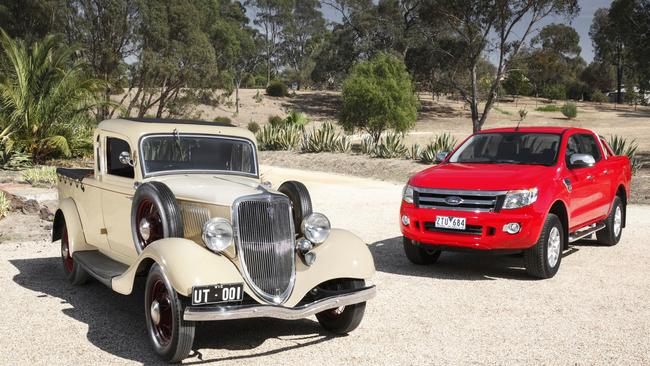
“Good question,” thought Bandt. Eventually, he settled on a design that took the front half of a Ford V8 road car and grafted an integrated steel tray on to the back.
Unlike many of the light trucks of the time, which were built with an open-sided cowl for the driver and a passenger, Bandt’s coupe utility was based on a car and offered car-style cabin comfort with a tray to carry loads at the back.
The revolutionary design was so impressive that Henry Ford himself met Bandt in 1935 to evaluate two of the new utes.
“Mr Ford called in his men to look at the coupe utility. They took one look and asked him what it was. Mr Ford replied ‘it’s a kangaroo chaser and we are going to build them here’,” Bandt said after returning to Australia.
Bandt’s design spawned hundreds of models and is still seen on building sites and farms around the world.
LEYLAND P-76
The P-76 has been the target of scorn and mockery for decades but there was a lot to like about British Leyland’s monumentally unsuccessful foray into the large car market in Australia.
Sure, the styling was quirky and the build quality wasn’t great, but the P-76 was intended to take the fight up to the big three — Holden with its Kingswood, Chrysler’s Valiant and Ford’s Falcon range when it debuted in 1973.
Its advertising slogan was simple: “anything but average”.
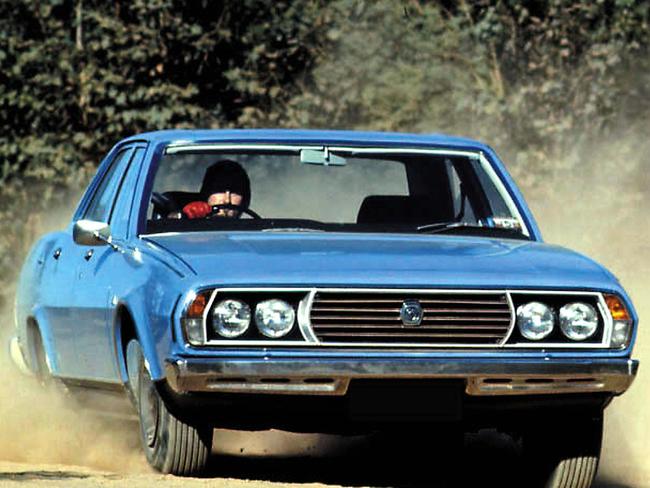
It featured a small 2.6-litre straight six or top-of-the-line 4.4-litre all-alloy V8 engine, which Leyland claimed gave its car a 230kg advantage over equivalent Holden Chrysler and Ford models and advances including standard power-assisted front disc brakes, rack and pinion steering, concealed wipers, a hinged bonnet and a not large enough to fit a 44-gallon drum.
Road tests at the time praised its handling against its Big Three rivals, and it won the prestigious Wheels magazine’s car of the year award in 1973.
Atrocious early build quality, strikes affecting component suppliers, the first fuel crisis hurt sales and British Leyland’s financial troubles at home led British Leyland to pull the plug in October 1974 before a wagon and coupe version reached full production.
In all, 18,007 P-76s were made.
CHRYSLER VALIANT CHARGER
Chrysler was an also-ran in the muscle car stakes in the 1960s.
While Ford had its all-conquering Falcon GT and GTHO models and Holden had success with its Monaro and Torana GTR performance cars, Chrysler’s main performance car was the quick but slightly daggy Valiant Pacer.
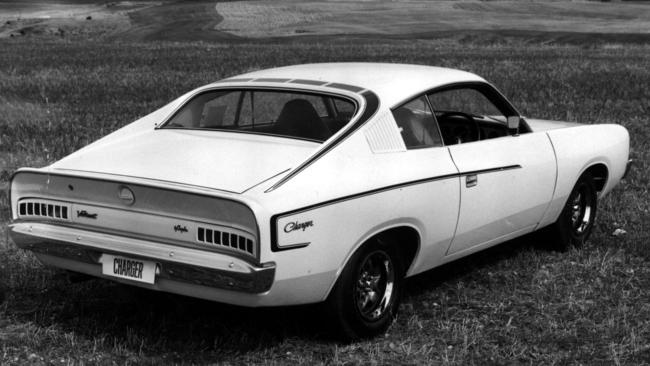
But Chrysler pulled one right out of the box when it launched the swoopy VH Valiant range in 1971 — the Valiant Charger.
Chrysler bosses were strapped for cash to develop a new performance model but came up with the aggressively styled Charger with its blunt, fin-like tail end and pillarless two-door configuration on a short wheelbase and with the company’s impressive Hemi six-cylinder range as its cornerstone.
V8s were available, but the 265 Hemi six was the pick of the bunch, especially in the high-performance triple carburettor E38 and E49 models. The short wheelbase and wide track gave the Charger a menacing stance on the road and a handling advantage.
It won Wheels car of the year in 1971.
Australia had a new muscle car legend.
HOLDEN VE COMMODORE
The big Holden is so familiar to Australians that it’s hard to imagine how a large six-cylinder Australian family car could be considered innovative.
But its design was so good that General Motors imported Aussie-built performance Commodores to North America and used the car’s Omega chassis as the basis for a revival of the legendary Chevrolet Camaro.
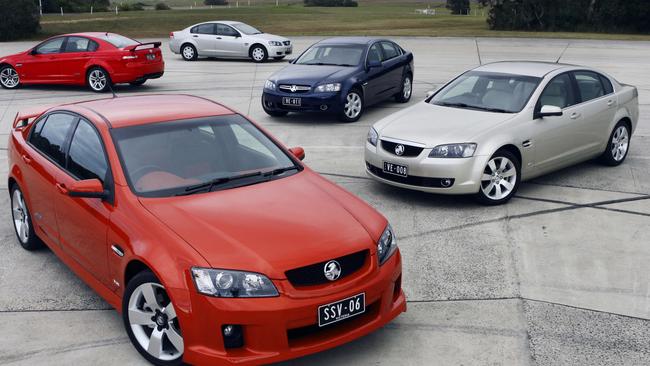
Prior to the VE Commodore in 2006, all Commodore chassis were heavily modified versions of the European Opel Omega chassis.
With Omega production slated to end, Holden was forced to engineer its own chassis.
Development of the large, rear-drive Zeta chassis began in 1999 as part of the $1 billion VE Commodore program.
The VE Commodore won Wheels’ car of the year in 2006.
As well as being the basis for the Commodore/Statesman range in Australia, V8 Commodores were imported to the US as Pontiac G8 or Chevrolet SS, to Brazil as the Omega B or C, and to China as the Buick Park Avenue (sent to China for assembly in kit form).
Some HSV Commodore models were exported to the Middle East and the UK.
Long-wheel base Statesman models have also been exported to the US in special trim as the Chevrolet Caprice PPV for use as police cars.
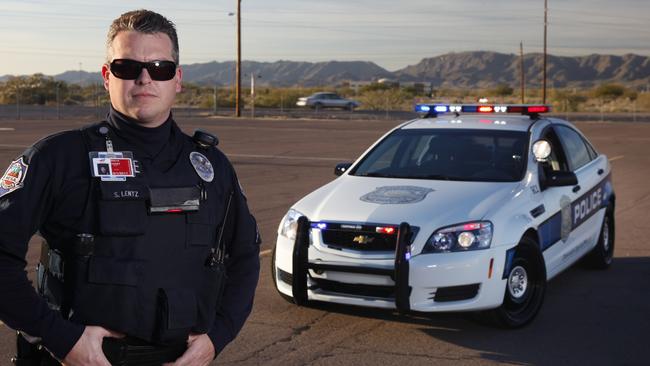
The only non-Australian built car on the Zeta was the fifth generation Chevrolet Camaro, built in the US and Canada from 2007 to 2015.
Wider plans to use the Zeta platform around the world fell apart because of the global financial crisis.
The Zeta chassis died with the Commodore.
FORD TERRITORY
The Territory may look pretty pedestrian, but this car was a clever cut-priced SUV that took its market segment by storm.
Ford Australia boss Geoff Polites saw the need for a “soft-roader” SUV in the company’s Aussie line-up to combat the rise of models like Toyota’s Prado as family transport.
But with nothing in the Ford world quite fitting the bill, the company set out to create its own on a budget.
The Australian-made Ford Territory was born.
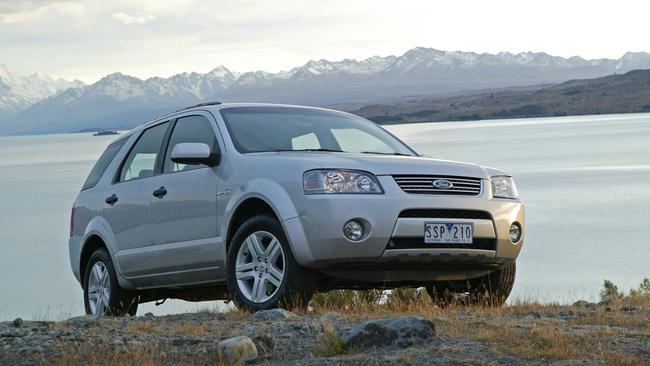
The Territory started life as a concept car at the 2002 Melbourne International Motor Show to test the waters, and went into production in 2004 after a favourable reception at the motor show.
It took its 4.0-litre “Barra” engine, automatic transmission and many components from the excellent BA Falcon range to save costs, and wrapped it all in an attractive SUV body.
It was an instant hit. The big, Falcon-based SUV was lauded for its car-like comfort and handling, its versatile storage spaces in the cabin area and optional seven-seat capacity.
The Territory won the prestigious Wheels magazine’s car of the year award in 2004.
The downside was that it made the old Falcon wagon look like a dinosaur, especially with its independent rear suspension compared to the Falcon’s antiquated leaf springs.
It robbed the Falcon wagon of plenty of sales and forced its production to shut down in 2010.
Just over 170,000 were built before Ford Australia closed its Australian manufacturing arm.
HOLDEN TORANA GTR-X
Ford started the muscle car war in 1967 when it shoehorned a 289 cubic inch V8 under the bonnet of an XR Falcon, gave it a four-speed manual gearbox and some handling tweaks that turned it into a Bathurst winner and an instant classic.
Holden fired back in 1968 with the Monaro. Ford escalated the war with its enormously powerful GTHO Falcons. Then, Holden took another shot with its small, agile and fast six-cylinder Torana GTR.
The Torana GTR-X was almost Australia’s first genuine supercar in 1970.


Holden was tantalisingly close to putting this car into production. It made promotional films, issued press pictures and created brochures, but the high production cost and the small Australian ended that dream.
The car used the running gear from a Torana GTR XU-1 but with a sleek, edgy fibreglass two-door hatchback body.
The car weighed only 1043kg, had a top speed of 210km/h and, if it went into production, would have been the first Australian car with four-wheel disc brakes as standard equipment. That honour went to the Ford’s Falcon GT and LTD in 1973.
Three working prototype GTR-X cars were built. Two are privately owned but a third is on display at Holden headquarters in Port Melbourne.
FORD CAPRI CONVERTIBLE
This little convertible was an attempt to build Ford Australia a future as a mass car exporter but production problems hurt the car’s sales and, ultimately, Ford Australia’s reputation with its bosses in the US.
Most Capris were built in left-hand drive for export to the United States, where it was sold by Ford’s Mercury division.
It was based on rock-solid Mazda 323/Ford Laser running gear but turned those little hatches into a two-door ragtop styled by Ghia with a choice of fuel-injected or turbocharged 1.6-litre engines.
But there were manufacturing issues, most notably with the convertible roof, which sometimes developed leaks.
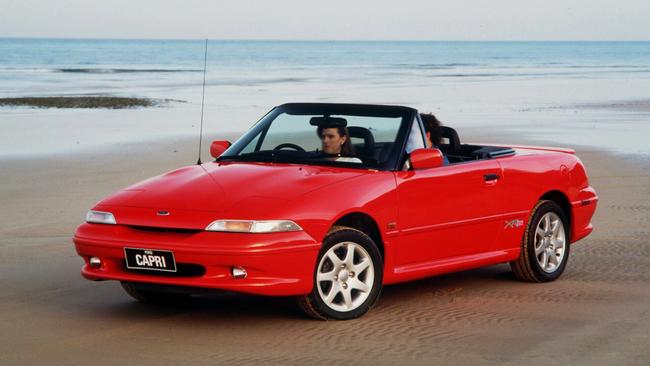
Ford Australia found reasonably quick fixes for the problem but complaints from early owners and a series of stories with disgruntled buyers on Nine’s A Current Affair damaged the car’s reputation.
Around the same time, Mazda launched its now revered MX5, a true sports car with styling inspired by the Lotus Elan and rear-wheel drive.
It was less practical than the Capri, which could seat four people and had a larger boot, the Capri was no match for the MX5 on the road.
More than 66,000 Capris were built at Ford’s Broadmeadows plant between 1989 and 1994.
Some motoring experts have since suggested that the Capri experiment was the reason Ford in the US blocked moves to export the outstanding BA Falcon range stateside in the mid-2000s — a move that ultimately may have preserved Ford as an Australian manufacturer.
MITSUBISHI MAGNA
With the Sigma, the car that helped save Chrysler’s Adelaide plants, ageing by the early 1980s, Mitsubishi (which took over Chrysler and ceased production of the Valiant in 1991) was looking for a replacement and a car worthy of competing with the top-selling Ford Falcon and Holden’s Commodore.
It introduced the Magna in 1985. The Magna was based on the Japanese Galant.
It shared the Japanese cars doors, quarter panels and pillars but Mitsubishi’s Australian engineers dramatically widened the body by 65mm to better accommodate Australians’ taste for larger cars and greatly strengthened the car for tougher Aussie road conditions.

The widened Magna’s body was smaller and lighter than the Falcon and Commodore but it proved more fuel efficient and refined and was roomier inside thanks to the front-wheel drive layout.
It was good enough to give the big two a scare. It won the Wheels car of the year award in 1985 and again for its third generation in 1996.
An Australian-only wagon variant was introduced in June 1987.
The Japanese Sigma took Australia’s cue and was introduced around the world with a wider body, which hit the streets in Australia as a heavily re-engineered Magna with a V6 option in April 1991.
The four-cylinder engines were dumped for good in 1998.
The Magna’s run ended in 2005 when it was replaced by the 380 — a car based on the Japanese Galant but sharing many features with the Magna. Mitsubishi’s local production ended with the 380 in March 2009.
THE HOLDEN 48-215
There was nothing revolutionary in the 48-215 design — a six-seater rear-wheel drive sedan with a six-cylinder engine upfront — but, if nothing else, it showed that Australians could do much more than build cars based on foreign designs.
The Holden was made in plants around the country. It was cheap, tough as old boots and carried families into a new post-war era of prosperity.
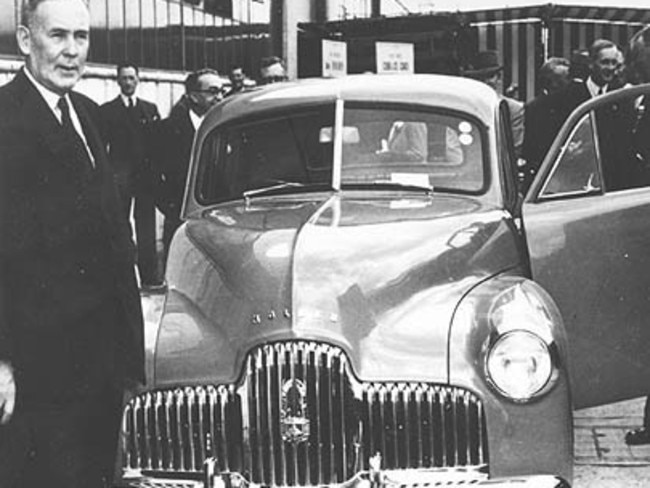
Ford had been manufacturing cars in Geelong since 1925 but none of its cars were locally designed, although many like the 1934 ute were clever re-workings of overseas designs for the local market.
With the 48-215, Holden laid claim to being “Australia’s own” carmaker with a locally built engine and chassis under a body styled by General Motors in Detroit.
The smaller body design was deemed too small for American tastes but canny Holden bosses decided that to thriftier Australians, a six-cylinder, mid-sized car would be a runaway success.
The 48-215 was the first in a line of Holden cars that sustained GMH as a local manufacturer for almost 70 years.
BOLWELL NAGARI
Bolwell built a series of cars in kit form, some using Holden parts, but the Nagari was the company’s first completely constructed car.
Designer Graeme Bolwell came back to the company’s Mordialloc factory in late 1966 after a working holiday at Lotus in the UK that inspired him to work with fibreglass.
He worked in a separate section of the factory on the new project while workers continued manufacturing car kits.
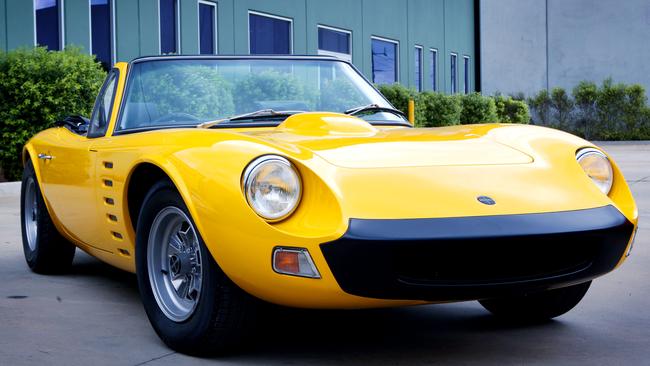
By 1970, the Nagari Mk8 was released. The car used an advanced one-piece body construction that was attached to the unique Bolwell chassis with aluminium plugs known as bobbins.
Most of the cars came with Ford 302 or 351 V8 engines and manual transmissions that were sourced new from Ford, rather than refurbished parts.
The car’s light weight made for sizzling performance.
A soft top Nagari followed in 1972.
But rising prices and stricter Australian Design Rules killed the original in 1974.
A new Bolwell Nagari, the MkX, went into production with a supercharged Toyota Aurion 3.5-litre V6 in 2008.
READ MORE:
See the dodgy 1982 lunch menut that fed a Melbourne primary shool


